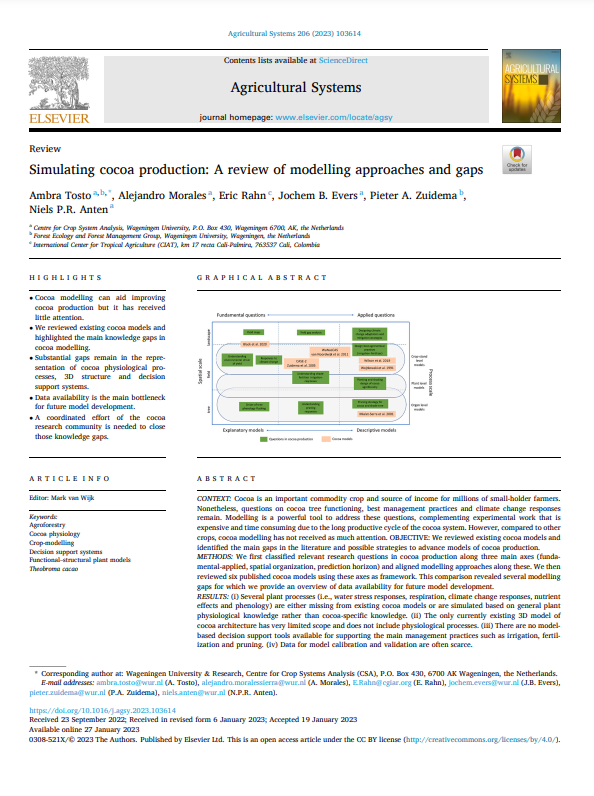Cocoa is an important commodity crop and source of income for millions of small-holder farmers. Nonetheless, questions on cocoa tree functioning, best management practices and climate change responses remain.
Modelling is a powerful tool to address these questions, complementing experimental work that is expensive and time consuming due to the long productive cycle of the cocoa system. However, compared to other crops, cocoa modelling has not received as much attention. OBJECTIVE: We reviewed existing cocoa models and identified the main gaps in the literature and possible strategies to advance models of cocoa production. METHODS: We first classified relevant research questions in cocoa production along three main axes (funda-mental-applied, spatial organization, prediction horizon) and aligned modelling approaches along these. We then reviewed six published cocoa models using these axes as framework. This comparison revealed several modelling gaps for which we provide an overview of data availability for future model development. RESULTS: (i) Several plant processes (i.e., water stress responses, respiration, climate change responses, nutrient effects and phenology) are either missing from existing cocoa models or are simulated based on general plant physiological knowledge rather than cocoa-specific knowledge. (ii) The only currently existing 3D model of cocoa architecture has very limited scope and does not include physiological processes. (iii)
There are no model- based decision support tools available for supporting the main management practices such as irrigation, fertil-ization and pruning. (iv) Data for model calibration and validation are often scarce. CONCLUSIONS: We conclude that data availability for model design, calibration and validation is currently the main bottleneck for further development of cocoa models. Extensive cooperation within the cocoa research community and a large network of long-term experiments under different climatic and management conditions are required to close the identified modelling gaps.
Tosto, A.; Morales, A.; Rahn, E.; Evers, J.B.; Zuidema, P.A.; Anten, N.P.R.

